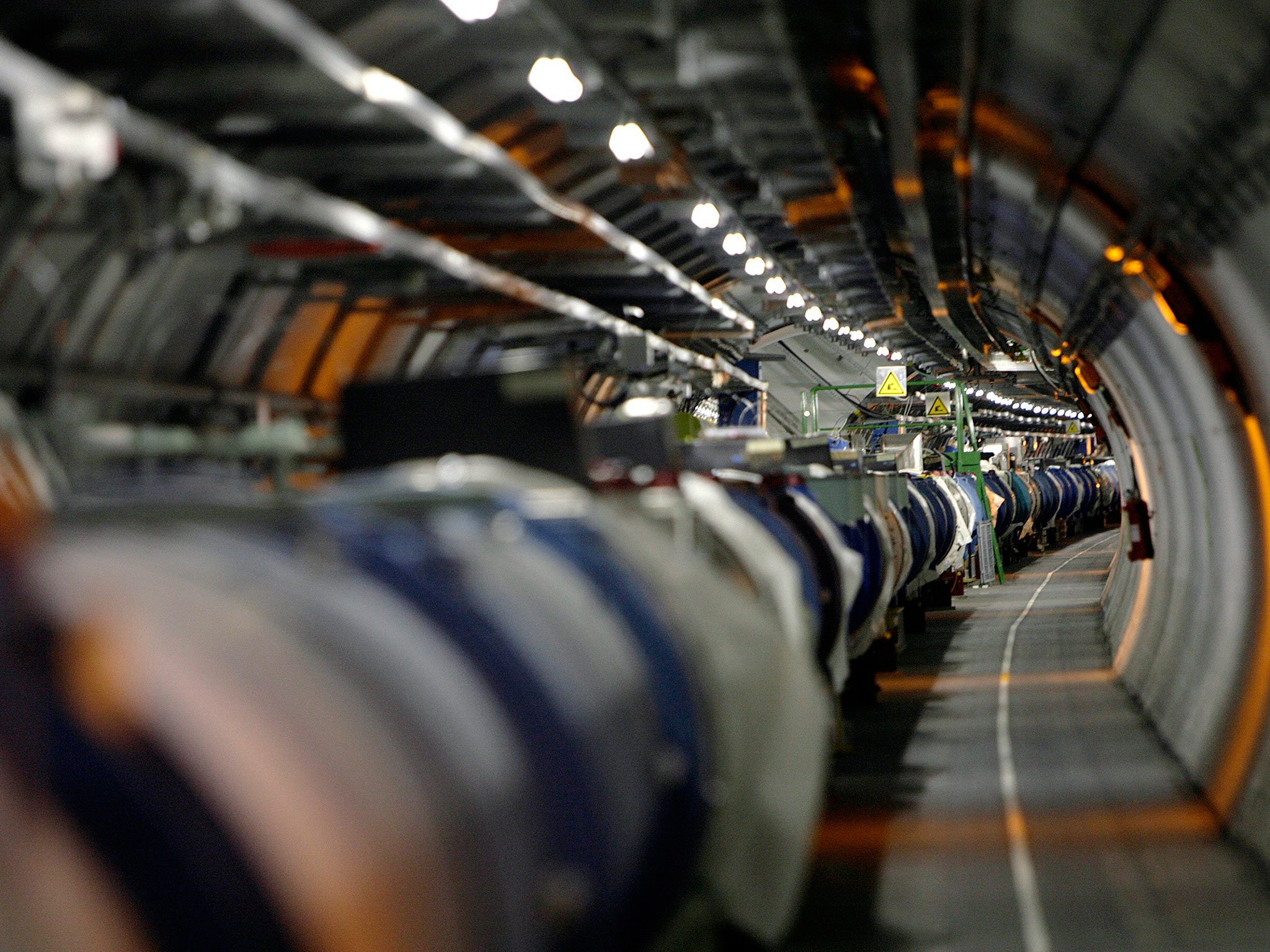Large Hadron Collider to be restarted as Cern plans second series of experiments in attempt to understand dark matter
'Season 2' will attempt to create dark matter, look for signs of extra dimensions of space and time and find a way to fit gravity into the standard model of particle physics

Like all the best sequels, the bangs will be bigger, the mysteries deeper and the heroes’ tasks harder than ever. Scientists at the world’s biggest machine – the Large Hadron Collider (LHC) at the Cern laboratory in Switzerland – were preparing to switch it on today for the first time in two years, ahead of the next series of experiments, dubbed “Season 2”.
After the 2012 discovery of the Higgs boson – key to explaining why matter has mass and so important that it’s called the “God particle” – the researchers have set themselves daunting new challenges.
Among other feats, they will attempt to create dark matter, some of the stuff that theoretically makes up 95 per cent of the Universe; look for signs of extra dimensions of space and time; and find a way to fit gravity into the standard model of particle physics – an embarrassing omission at present. Completely new particles could also be discovered, potentially revolutionising our understanding of the Universe.
In pictures: London's Science Museum opens Large Hadron Collider exhibition
Show all 10
The experiments require vast power. The beams of proton particles to be smashed together will create a collision with about 13 times the energy of a flying mosquito. Yes, it doesn’t sound much, but that energy is squeezed into a space that is about a trillion times smaller than the insect.
Professor Dave Charlton, who will lead one of the experiments, said the researchers wanted to find out more about the Higgs boson’s properties and whether there might be different kinds of the particle. “The other big question we hope to make headway on is what is the dark universe…. There’s a good chance we’ll be able to start to figure that out. If we’re able to access dark matter, we would be creating dark matter particles directly.”
Professor Charlton said a theory that combined gravity with our current understanding of particle physics “probably needs extra dimensions of space time”.
The LHC – a 27km (17 mile) circular tunnel, lined with powerful magnets, that is cooled to below 270 degrees Celsius – has been souped-up so much that Cern describe it as “almost a new machine”.
Low-energy beams are expected to be sent round the ring at first, as the researchers test the highly complex machinery, with high-energy collisions not expected for perhaps another two months.
“By recreating conditions like those just after the Big Bang in the laboratory, it is hoped to work out what happened in the aftermath of the creation of the Universe about 13.8bn years ago,” said Professor Charlton, of Birmingham University. However, anyone fearing a scientist will flick a switch and create a new big bang should rest assured.
The idea may have generated a degree of hysteria in the US when the LHC began operating, but it runs contrary to the laws of physics, Professor Charlton said. “One basic law is that you don’t get more energy out than you put in. We cannot produce new universes, new big bangs.
“The density of the energy is similar to what we had in the early Universe, but we’re not putting in the [total] amount of energy that there was in the Big Bang. It’s an incredibly, infinitesimally tiny piece of the Big Bang.”
Subscribe to Independent Premium to bookmark this article
Want to bookmark your favourite articles and stories to read or reference later? Start your Independent Premium subscription today.

Join our commenting forum
Join thought-provoking conversations, follow other Independent readers and see their replies